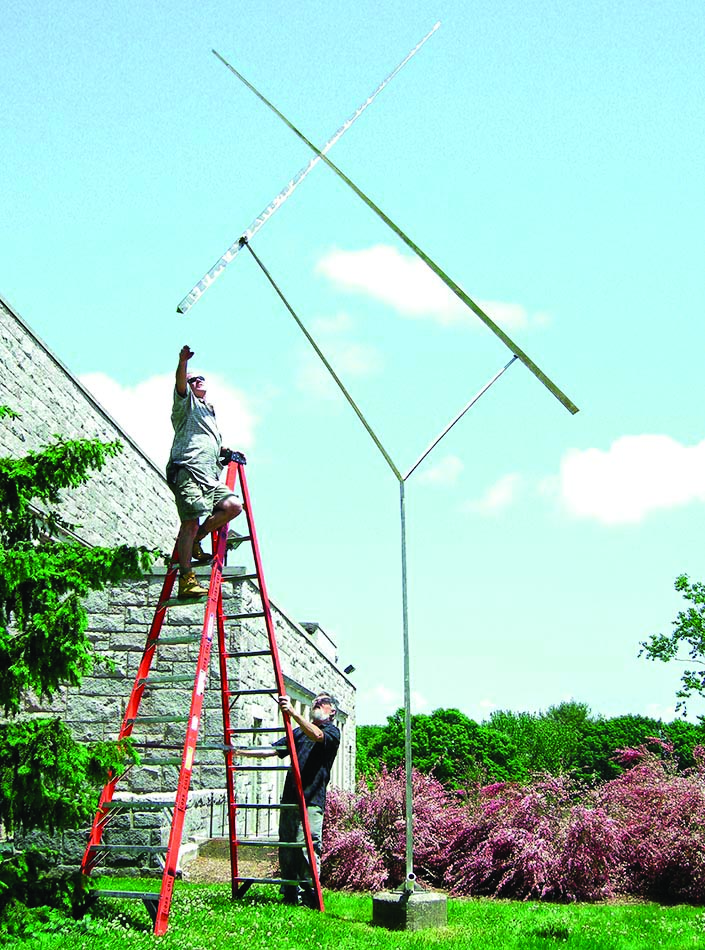George Rickey (1907-2002) is an American kinetic sculptor. After completing a degree in History from Balliol College in Oxford, England, Rickey traveled through Europe and became fascinated by the art he encountered. Against the will of his father, who was an executive at the Singer Sewing Machine Company, Rickey went to Paris to enroll in painting and drawing classes at Académie L’Hote and Académie Moderne.
After returning to the United States some time later with a new practice and appreciation for art, he taught art classes, maintained an art studio and was socially active in the New York art scene. According to his obituary in the /New York Times/, Rickey served in World War II and was assigned to “work with engineers in a machine shop to improve aircraft weaponry, an experience that reawakened earlier interests in science and technology.”
When he was discharged, Rickey returned to the United States and studied at the Chicago Institute of Design where he first began to experiment with geometric form and movement, and in 1949 he used glass to make his first kinetic sculpture.
Two Lines Oblique (1969) was installed at Connecticut College in 1969 in the middle of Castle Court shortly after the Joanne and Nathan Cummings Arts Center was completed. Sometime prior to 2001, the 20-foot tall work was moved to the top of the Castle Court stairs so that it wouldn’t interfere with the flow of traffic through the courtyard.
Crafted from stainless steel, Two Lines Oblique is a dynamic piece, featuring rotating arms that react with movement in the air. While the two steel arms look the same, one of them is intentionally one inch shorter than the other, and in 1994 was bent from contact with another object.
In a 2008 kinetic sculpture exhibition, curator Brigitte Micmacker from Sculpture Site Gallery commented, “The George Rickey work… is a classic example of the monumental works composed of blades that became Rickey’s best known legacy. The long, tapered blades used as pendulums are a wonder of empirical engineering: light-weight sheet stainless steel is wrapped around a structural core and lead weights are distributed unevenly to slow down the blades individually, a procedure Rickey used to create as much as a tenfold difference of tempo within the same sculpture.”
According to the 2009 Sculpture and Decorative Arts Conservation Services LLC report, the uneven arms were moved into storage for the winter months. The report continues to list the sculpture with a poor conservation condition due to a bent arm and extremely dusty surface in storage. The report recommends, “The damaged arm of the sculpture should be straightened, the hole repaired, the fastener replaced, and the entire piece should be reassembled, balanced and cleaned. If possible, the piece should be to the Rickey workshop and repaired and balanced, as the latter can be quite tricky.” Additionally, “During the survey, some members of the staff recalled that the arms moved too quickly for safety during windy weather and its position within the courtyard may have enhanced this wind effect. It may be for this reason that the sculpture was placed in an area with more trees. However, the sculpture should be relocated back to the center of Castle Court as it was apparently designed for this setting, and as an environmental piece, the location is part of the sculpture. When divorced from its original setting and motion, this piece cannot be really understood.”
While the report does not continue past 2009, Two Lines Oblique has since been restored and brought back to an appropriate condition, although not in the artist’s intended location. As members of this campus community, we ought to be good stewards and take care of our belongings as demonstrated by the recent conservation of Two Lines Oblique (1969).
Many other campus sculptures can use this kind of attention, but we must consider how their existence benefits our campus and reveals the historical significance they stand to serve.









